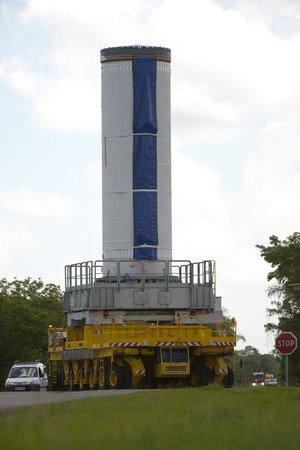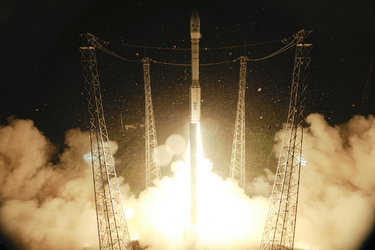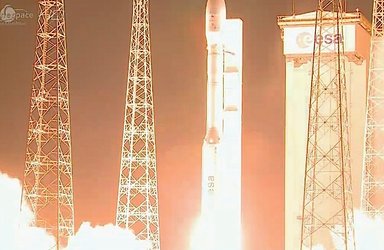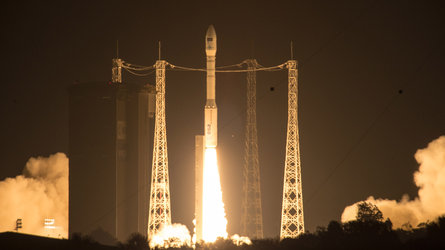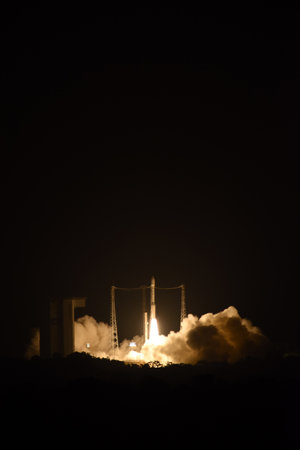Vega launcher
Vega has three solid-propellant stages and a liquid-propellant upper module for attitude and orbit control, and satellite release. Unlike most small launchers, Vega will be able to place multiple payloads into orbit.
With a height of 30 m and a diameter of 3 m, Vega weighs a total of 137 t at liftoff.
It has three main sections: lower composite, restartable upper module and payload composite.
The lower composite consists of the three stages and the four stage interface structures.
P80 first stage

| Height | 10.5 m |
| Diameter | 3 m |
| Propellant mass | 88 t |
| Burn time | 107 s |
| Max. engine thrust | 3040 kN |
The P80 has been developed both as Vega’s first stage and as a technology demonstrator. It is one of the largest, most powerful one-piece solid-propellant boosters ever built.
Zefiro-23 second stage

| Height | 7.5 m |
| Diameter | 1.9 m |
| Propellant mass | 23.9 t |
| Burn time | 71.6 s |
| Max. engine thrust | 1200 kN |
Zefiro-9 third stage

| Height | 3.85 m |
| Diameter | 1.9 m |
| Propellant mass | 10.1 t |
| Burn time | 117 s |
| Max. engine thrust | 313 kN |
Altitude & Vernier Upper Module (AVUM)

Zefiro-23 and Zefiro-9 are based on the previous Zefiro-16 technology demonstration carried out by Italian space agency ASI. Both stages are loaded with solid propellant before their shipment to Europe’s Spaceport in French Guiana.
Attitude & Vernier Upper Module (AVUM)

| Height | 1.74 m |
| Diameter | 1.9 m |
| Propellant mass | 550 kg |
| Burn time | 317 s |
| Max. engine thrust | 2450 N |
Launch performance
The restartable fourth stage, AVUM, hosts the Propulsion Module and the Avionics Module. It is restartable up to five times, allowing it to release multiple satellites into different orbits.
Payload composite

| Height | 7.18 m |
| Diameter | 2.6 m |
| Payload volume | 20 m3 |
| Fairing mass | 470 kg |
The payload composite is composed of the fairing made of half shells, which protects the payload during ascent, and the payload/launcher interface structure.
Launch performance
Vega is compatible with payload masses ranging from 300 kg to 2500 kg, depending on the type and altitude of the orbit required by the customers. The benchmark is for 1500 kg into a 700 km-altitude polar orbit.















 Germany
Germany
 Austria
Austria
 Belgium
Belgium
 Denmark
Denmark
 Spain
Spain
 Estonia
Estonia
 Finland
Finland
 France
France
 Greece
Greece
 Hungary
Hungary
 Ireland
Ireland
 Italy
Italy
 Luxembourg
Luxembourg
 Norway
Norway
 The Netherlands
The Netherlands
 Poland
Poland
 Portugal
Portugal
 Czechia
Czechia
 Romania
Romania
 United Kingdom
United Kingdom
 Slovenia
Slovenia
 Sweden
Sweden
 Switzerland
Switzerland






























